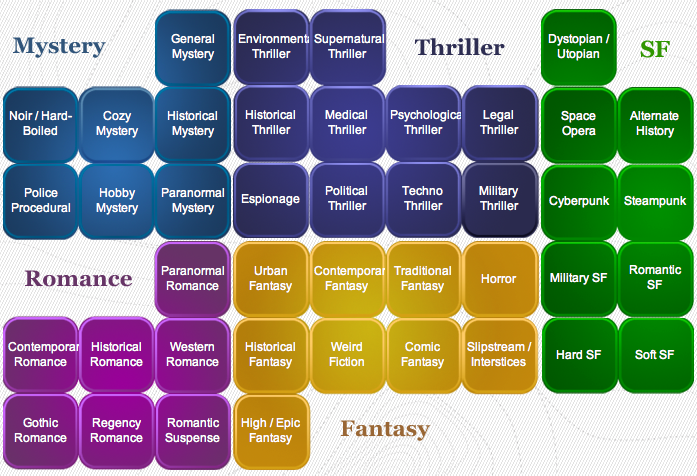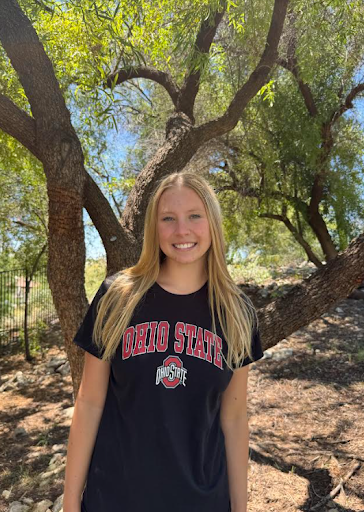Tropes in Genres
Genres are often seen as the categories that pieces of fiction fall into, and each has common moods, tropes, and story elements that are more present in them than in any other.
There are many sub-genres beneath the major genres in literature.
March 19, 2021
While people can easily find a list of dozens of genres and subgenres of fiction, a few stand out more than the rest. Some genres, like sci-fi and fantasy, have been extremely popular in the last couple of decades, while others, like young adult, have become popular with series like “The Hunger Games.” Every genre, especially the more popular ones, has tropes and themes that are common throughout them, and they can be easy to find if you know to look for them.
According to TvTropes, romance is one of the most popular genres, since it can contain many different settings and conflicts, giving readers lots of variety. As the name of the genre suggests, romances follow a relationship between two people, whether they’re coming together, drifting apart, or a mix of both. Most romances finish with a happy ending, but have a very somber and serious tone throughout, though this can vary with some subgenres. They also focus heavily on the feelings and internal conflicts of their characters, as opposed to some genres that often put more focus on external conflict.
Science fiction and fantasy are as similar as they are different. Both involve heavy amounts of worldbuilding and have some of the most diverse settings and plots of any genres. While they can easily be stories about action and adventure, they can also be thrillers or romances. However, while sci-fi usually involves advanced technology and worlds of the future, fantasy focuses more on alternate worlds, magic, and settings based on the past. Both also have many subgenres with their own specific tropes, like dystopian sci-fi’s dark tones and high fantasy’s quests.
Thrillers, while not as popular as some of these other genres, still have larger audiences and plenty of tropes. They focus on making the reader feel suspense and tension, using many different settings and situations to do so. The setting is easily one of the most important parts of this genre though, since the goal is to make the readers feel the same way the characters do. Things like cliffhangers, chase scenes, and dark tones characterize this genre.
Young adult books have recently exploded in popularity, with tropes like the love triangle becoming extremely well known. Writers Edit states that these books are made for younger audiences, but are easily enjoyable by people of all ages. They mostly have teenage protagonists, and are mostly coming of age stories, with characters both overcoming challenges and growing as people. Young adult is another genre that crosses into many others, though dystopian young adult novels have seen the most growth over the past couple of years.
Similar to young adult books, new adult targets a specific age range, but is read by people outside of it. New adult often feels like a cross between romance and young adult, having younger characters and aspects of adventure, but much more mature themes and content. Instead of being coming of age stories, books in this genre often focus on characters exploring and adapting to new environments.
Lastly, mystery and crime is another genre with both variety and popularity. While usually written for adults, these books can be enjoyed by people of different ages, and can cross into many other genres. Like thrillers, they contain tense moments and cliffhangers, following characters as they try to understand who caused something or what led to an event. This genre also uses extensive foreshadowing to allow readers to speculate about what will happen next, and uses plot twists to surprise readers just as they think they have everything figured out.
Knowing the norms and tropes of each major genre can help readers better decide what kinds of books they want to buy and read, and can even help them to predict plot points and the direction of the story. For aspiring writers looking to publish traditionally, knowledge of what’s expected in a genre is even more important, since it can greatly improve their chances of getting published. People looking to know more about the differences between genres can look into the many subgenres that exist, which each have their own little sets of tropes.












